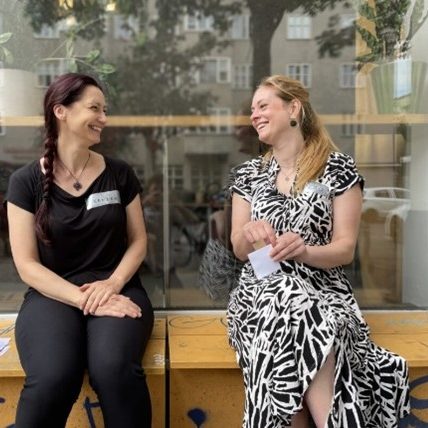What is the real basis for successful collaboration? What distinguishes a productive meeting from a tiring session? What gives us confidence and motivates us as a team to keep at it?
People who “can” work together. All the perfect organization, planning or preparation is worth nothing if the emotional foundation is missing. Tense silence, crackling in the room, positive vibes only – the words may be different, but they describe exactly what we (should) recognize when we enter a room with many people. We sense whether this environment is right for us. Mood, energy, atmosphere, climate, emotion. The term doesn’t matter; it’s what we make of it that counts.
A sense of our immediate surroundings in a meeting, workshop, training session, discussion, etc. helps us to find our way in the world, whether in a work context or in our private lives. Human beings are not just the often cited social beings, but are also subject to scientific facts.
For example, our mirror neurons in the brain biochemically ensure that we often have no choice but to be emotionally infected. And if the mood in the room is bad, it takes a lot of energy to turn it around.
Why a good mood makes companies more successful
If you compile the factors that make a project successful for you: Is there a good atmosphere in the team?
It should be, for these three important reasons, among others (incidentally, this applies far beyond co-creative innovation projects!):
- A poor team atmosphere causes increased stress, which makes people ill. Optimism, on the other hand, is contagious: a study shows that optimistic people even live longer.
- If a project goes awry, negative emotions can easily arise. Humanly normal. At work, these can often not be “let out” and cause pressure. The earlier attention is paid to this, the better the emotions can be managed and you can avoid protracted passive-aggressive behavior, which can even lead to bullying. So set up your sensors early!
- Many people simply have no desire to work in a negative environment (keyword “inner resignation”). In times of a shortage of skilled workers, it is particularly important for managers to recognize what employees need in order to fully exploit their potential at work. An atmosphere that is characterized by appreciation, friendliness and good vibes is definitely part of this.
Our tip: Take a methodical approach to resolving bad energy. Because as paradoxical as it sounds, even more emotionality often doesn’t help. Feel free to ask us if you would like to tackle the turnaround in your team.
7 tips for positive energy: eliminate mood killers and work better together
Mood management is therefore just as important as project management. “Positive leadership” also takes up this approach to leadership with emotional intelligence. We believe that you don’t have to be a manager to recognize the added value of good energy between people.
If you don’t, here are our 7 best tips for creating a positive atmosphere in group collaboration for innovation processes and more:
- Energizer methods, i.e. an activating arrival and getting to know each other, ensure a clear head at the beginning. Recommended: Look for mini-formats that are associated with fun and release dopamine. This stimulates blood flow to the internal organs – which also makes the brain more efficient.
- Starting with exclusively positive messages, for example in the introductions round, deliberately focuses on good energy in the room. And quickly catches people in a bad mood.
- Incorporating movement into long meetings and workshops not only has a method and structures the format, it also serves to regulate the body’s energy: either to reduce excess energy or to refuel after a static sitting phase. Why not hold a conference standing up? Or change seats and therefore perspectives?
- A participant has an important insight at this very moment that will advance the team and thus the project? Then share important learnings NOW and build on them. Appreciation pushes the mood in the room to the maximum.
- But if it’s always the sourpusses who have the floor… Rules for communication support a great climate. Use an object to indicate who currently has the floor. This helps to contain the “complainers” and also gives introverted people the opportunity to express themselves sufficiently. Everyone is heard and emotions can be expressed openly and in a regulated manner.
- Without trust in your fellow human beings, no satisfactory results will be achieved. If there are already differences or even conflicts in the team, a professional, neutral moderator can help. Their first task is to get everyone talking again, so that in the second step they can make a fresh start together with positive energy.
- Small effort – big effect: The external circumstances are important for the success of meetings etc. Sufficient light stimulates the happiness hormone serotonin, so ensure good lighting. Natural plants provide more oxygen in the room. Comfortable chairs, tidy tables and space for all documents bring order and well-being. And sometimes you need energy for energy – so don’t forget your team’s favorite cookies!
Good energies need good methods
The aim of every project is to implement it well, efficiently and with lasting success. Whether it’s a workshop, product launch or annual strategy. Innovation formats are no exception. This is not possible without people, courage, method[SW1] . Mood management is an important lever for activating people with the method of courage. We help you to use this lever effectively. Feel free to contact us!
Questions? Talk to us!

Sandra Würdig
Senior Consultant I Innovationsdesign & Co-Creation
| Phone | +49 211 3854 7554 |
|---|---|
| sandra.wuerdig@ifok.de |
